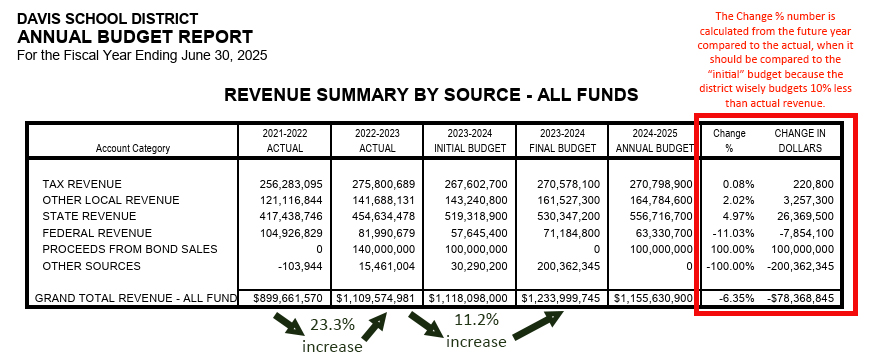Utah Fits All Scholarship: Data contradicts opponent’s claim that UFA Scholarship decreases funding for public education
The Utah Fits All Scholarship is a long hoped for dream that finally became a reality in 2024. School choice through a voucher or Educational Savings Account (ESA) has been a goal of those that want innovation in education. Did you know that 73% of Americans are dissatisfied with public education? CHOICE began because we wanted to do something about it for our own children!
Many of our families make big sacrifices/investments for their children’s education and a few of them received the scholarship this past year. CHOICE has grown over the past 5 years without the UFA Scholarship and only 12% of our families are recipients of the scholarship this past year. Keep in mind that we all pay taxes throughout our lives yet only a portion of our families use the tax dollars for their education even though public education is “free”. We would love for more families to benefit from their tax dollars!
- In Davis County School District, per student budgeted revenue is $14,632.68 ($1,155,630,900/78,976 students) for the 2024/2025 school year. This is reflective of the first year in UFA funding. There was a decrease of 1,229 students or 1.015%. This is significantly higher than other districts – statewide there was a decrease of 0.7%. The school district has a history of budgeting 10% less than the actual revenue, so we can estimate that the actual per student spending will be close to $16,095.95 for the year.
- In Davis County School District, per student budgeted revenue was $13,940.48 ($1,118,096,000/80,205 students) for the 2023/2024 school year.
- Interestingly, in the 2023/2024 school year, the district actually had revenue of $1,233,999,745, which means the district received an additional $115,903,745. This means that the actual per student revenue was $15,385.57 that year. It is misleading to say that the district is getting less money/student when there was an additional 10.366% (1,233,999,745/1,118,096,000-
1=10.366%) in unexpected revenue that year due to bond sales -
- In Davis County School District, per student budgeted revenue was $11,988.04 ($969,604,400/80,881 students) for the 2022/2023 school year. The actual revenue was $1,071,535,300, which means that the district received an additional $101,930,900. This means that the actual per student revenue was $13,248.29 that year. Again, it is misleading to say the district is getting less money/student than the previous year when there was an additional 10.5% in unexpected revenue.
- In Davis County School District, per student budgeted revenue was $10,517.60 ($860,844,400/81,848) for the 2021/2022 school year. The actual revenue was $941,115,700, which means that the district received an additional $80,271,300. This means that the actual per student revenue was $11,498.33. Again it is misleading to say the district is getting less money/student than the previous year when there was an additional 10.93% in unexpected revenue.
- In Davis County School District, per student budgeted revenue was $10,294.60 ($830,310,200/80,655) for the 2020/2021 school year. The actual revenue was $880,641,600, which means that the district received an additional $50,331,400. This means that the actual per student revenue was $10,918.62. Again it is misleading to say the district getting less money/student than the previous year when there was an additional 6.06% in unexpected revenue.
In Summary, the Davis County School District grew actual revenue by 40% ($1,233,999,745/$880,641,600=$
What’s misleading to the district’s budget numbers is the % change columns because it’s a comparison of the budgeted revenue compared to the actual revenue. The school district always budgets for 10% less than what is expected. This means that they are getting 10% more each year with the same number (or less) students. Yet, a precursory look at the budget would look like the budget is staying the same. A more accurate number would be a budget to budget comparison. Even though the district does not budget for these extra funds each year, they spent every dollar.

Interestingly, the state school board reports a decrease in enrollment during the first year of UFA scholarship of 0.7% – 4,873 students. If 10,000 students received the scholarship, that means that approximately half are already not enrolled and are homeschooling or attending an independent/private school. If they are already attending an independent/private school, that means they are finally receiving funding that they are paying for via taxes. It is also important to remember that students using Open Ed are technically enrolled in a school district – where some school districts receive an unknown amount of funding without providing any services and the families receive $2,000.
The UFA Scholarship represents a groundbreaking opportunity for Utah families to have a greater say in their children’s education. With the support of school choice advocates, CHOICE aims to continue expanding access to the scholarship, ensuring that all families—regardless of their financial means—can use their tax dollars to fund the educational options that best meet their needs.
About CHOICE
CHOICE is a place where a child, along with their parents, determines learning goals and curricula. CHOICE creates a unique learning environment for your child with the resources, AI tutoring, peer-to-peer coaching, and games/challenges to make learning enjoyable and fruitful! If you dream of a learning environment that will let your child flourish, please consider CHOICE! By advocating for educational reform, CHOICE seeks to provide families with greater opportunities for innovation, flexibility, and individualized learning pathways.
For media inquiries, please contact:
Paul Tanner
(801) 440-5456
www.choice-education.org
